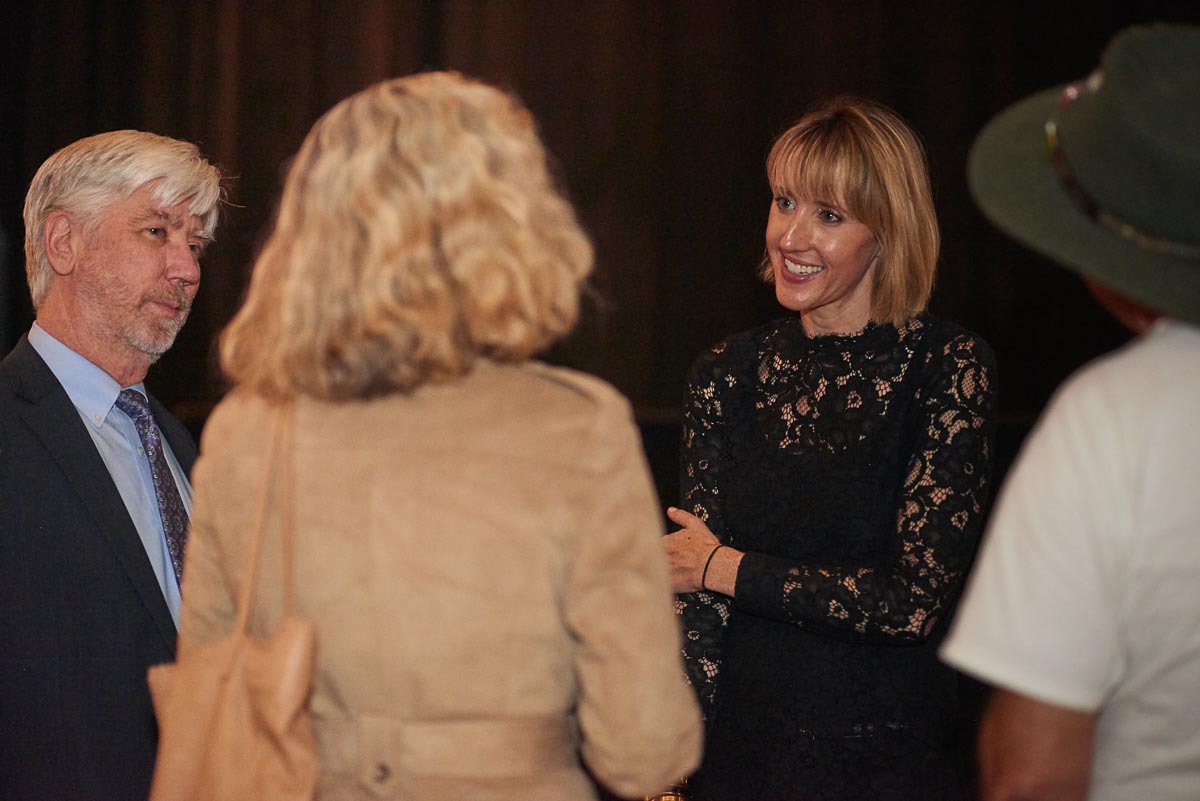On Wednesday evening, Currid-Halkett, author and professor of public policy at the Price School of Public Policy at the University of Southern California, opened this season's KI Forum lineup at the Museum of Fine Arts, Houston. She highlighted the findings of her research on how arts and culture influence the American consumer economy and the inner workings of the "creative economy."
Through her work, Currid-Halkett spoke on how the creative economy thrives in a different way than traditional businesses operate. Instead of a traditional nine to five schedule, the creative economy thrives in the importance of "the scene." This scene - defined by artists' nightlife, industry events and spatial proximity to each other - is how artists are able to participate in the creative economy. She points out that through these scenes, people are eating and drinking, yes, but also doing business with each other.
She tracked the artists' movements through geocoding photos put into Getty Images and mapping the "hot spots" of where artists in New York City and Los Angeles are most frequently interacting with each other.

Photo credit: Elizabeth Currid-Halkett

Photo credit: Elizabeth Currid-Halkett
She continued her research looking into where artists go for meetings and supplies and learned, at least in New York City, that creative professionals' schedules vary extremely day to day.
"I found an artist's 10 a.m. on a Tuesday may look totally different than their 10 a.m. on a Friday," Currid-Halkett said. She continued that having other artists, customers, stores and suppliers nearby made this flexibility a possibility.
The conclusion of Currid-Halkett's presentation took an amusing turn when she began speaking on her research that looks at what people in a city buy more often than other American cities. She worked with the New York Times to look at what people buy where and how a city influences residents' spending.
For New York City, consumers bought nearly 600 percent more watches than other American cities and Los Angeles' residents spent about 374 percent more on out-of-town trips and motorcycle rentals than other cities. For Houston? The Bayou City spends nearly 340 percent more on mutton, goat and game than other cities. The audience got a good laugh out of this and while this could prove that Houston loves to eat, it could also highlight Houston's diversity and density of immigrants. This could increase the variety of meat Houstonians buy for dinner over other less diverse American cities.
Finally, Currid-Halkett concluded with Houston's artist population compared to others, including New York City, San Francisco, Chicago and Los Angeles. Houston's numbers were the lowest out of the comparison. This isn't hard to believe when funding for the arts in school are being cut and the large majority of funds traditionally went to the biggest players in the arts.
A Houston Press report in 2015 depicted the struggle sub-$1 million organizations have when it comes to funding in Houston, primarily because the majority of the funds go to big names like the Houston Ballet, the Alley Theatre, the Children’s Museum of Houston and The Menil Collection. More than 200 small- and midsize-arts organizations and artists fought for a little over $4 million in grants, which the Press called "crumbs" in its 2015 report. And of those 200 organizations, less than one percent went to Latino art groups from 2010 to 2015.
“There needs to be an ongoing conversation, not just once every 20 to 25 years,” Jane Cahill West, a member of the Arts and Cultural Plan, told the Press in 2015. “People need group therapy and to sit across the table from one another instead of cannibalizing one another.”
During her lecture, when speaking of the future artists to come, Currid-Halkett said, "We have to figure out a way to support them. This is how we support the future of the arts. They are not in the galleries yet. We hope they are, but they are not yet."
"Museums house dead artists; art districts house future generations," Currid-Halkett said. Therefore, the support of those art districts - whether it's in New York City, Los Angeles or here in Houston - need to be supported to continue to inspire cities.
Currid-Halkett was the first speaker this fall to participate in our Kinder Institute Forum. To see the future forums we have on the schedule, visit our events page here.

